PRODUCTS
ORGANIC WILD HONEY:
Our honey is organic and comes from one of the most preserved regions of Brazil: the Atlantic Forest, specifically the Serra do Mar and Vale do Ribeira complex. According to the Brazilian Institute of Environment and Renewable Natural Resources (Ibama), this region has over 1,300 animal species and 20,000 types of plants. Some of the main plants that bloom for our bees are:
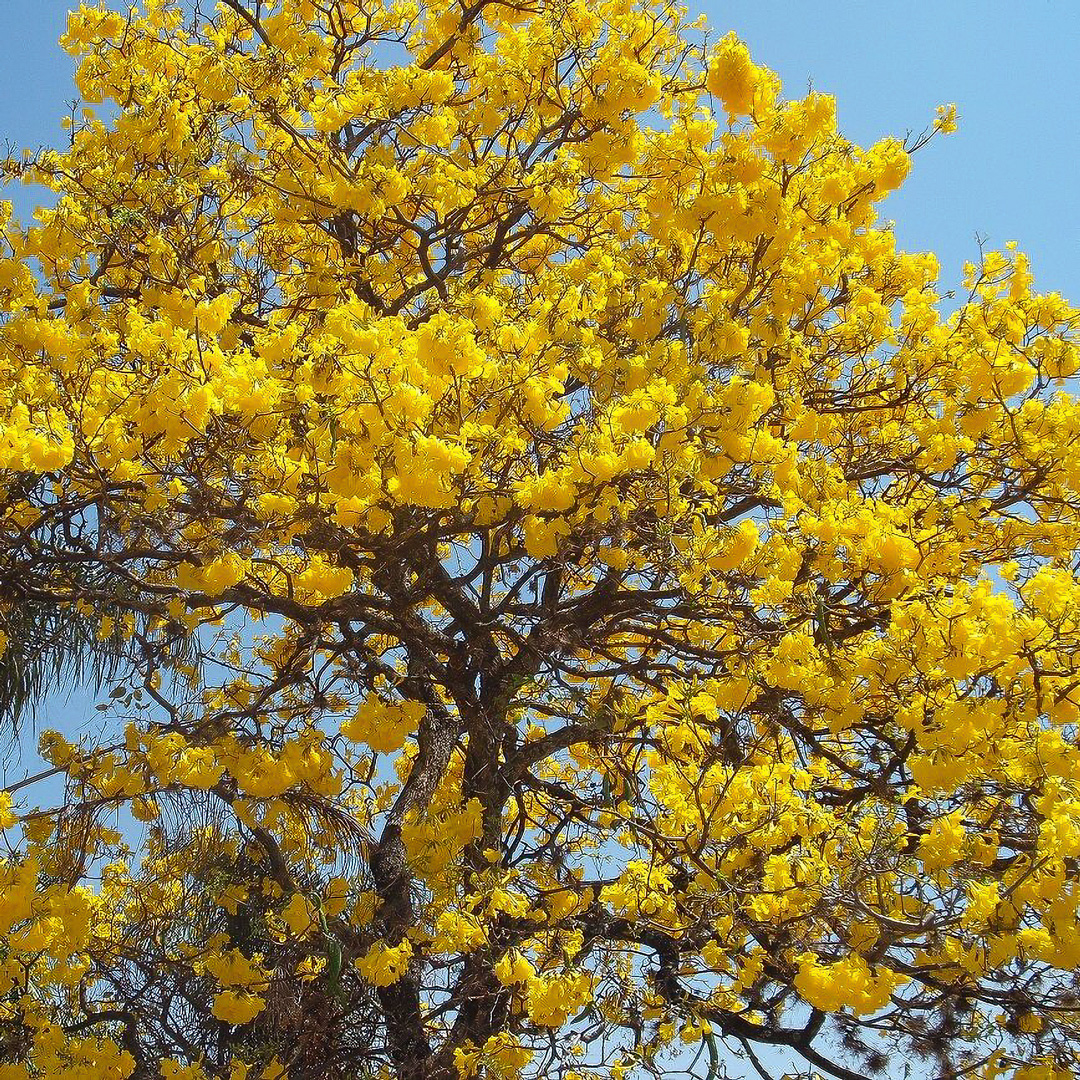
Ipê-amarelo
(Handroanthus chrysotrichus)
Symbolic Tree of Brazil, its flowers bloom between winter and spring and are used in traditional medicine for throat, mouth, and gum inflammations, as well as for treating anemia, parasitic infections, fevers, and intestinal issues. Its flowers also appear in purple, pink, and green.
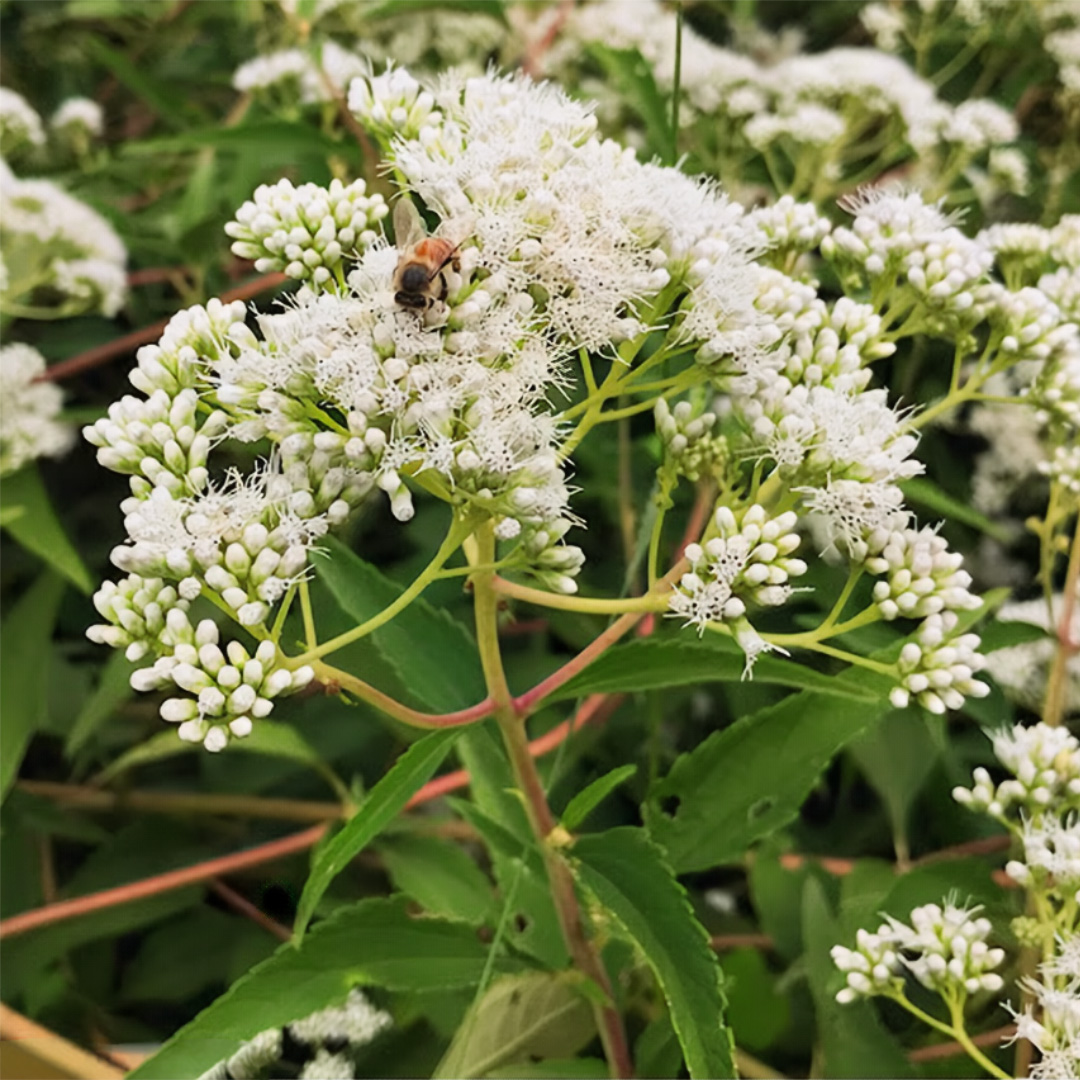
Assa-peixe
(Anadenanthera colubrina)
A species native to Brazil, Assa-peixe honey is known for its medicinal properties, highly sought after for its anti-inflammatory and antioxidant effects. Its leaves are used in cooking and resemble fish—hence its popular name. The flowering season is between summer and autumn, attracting bees in large numbers.
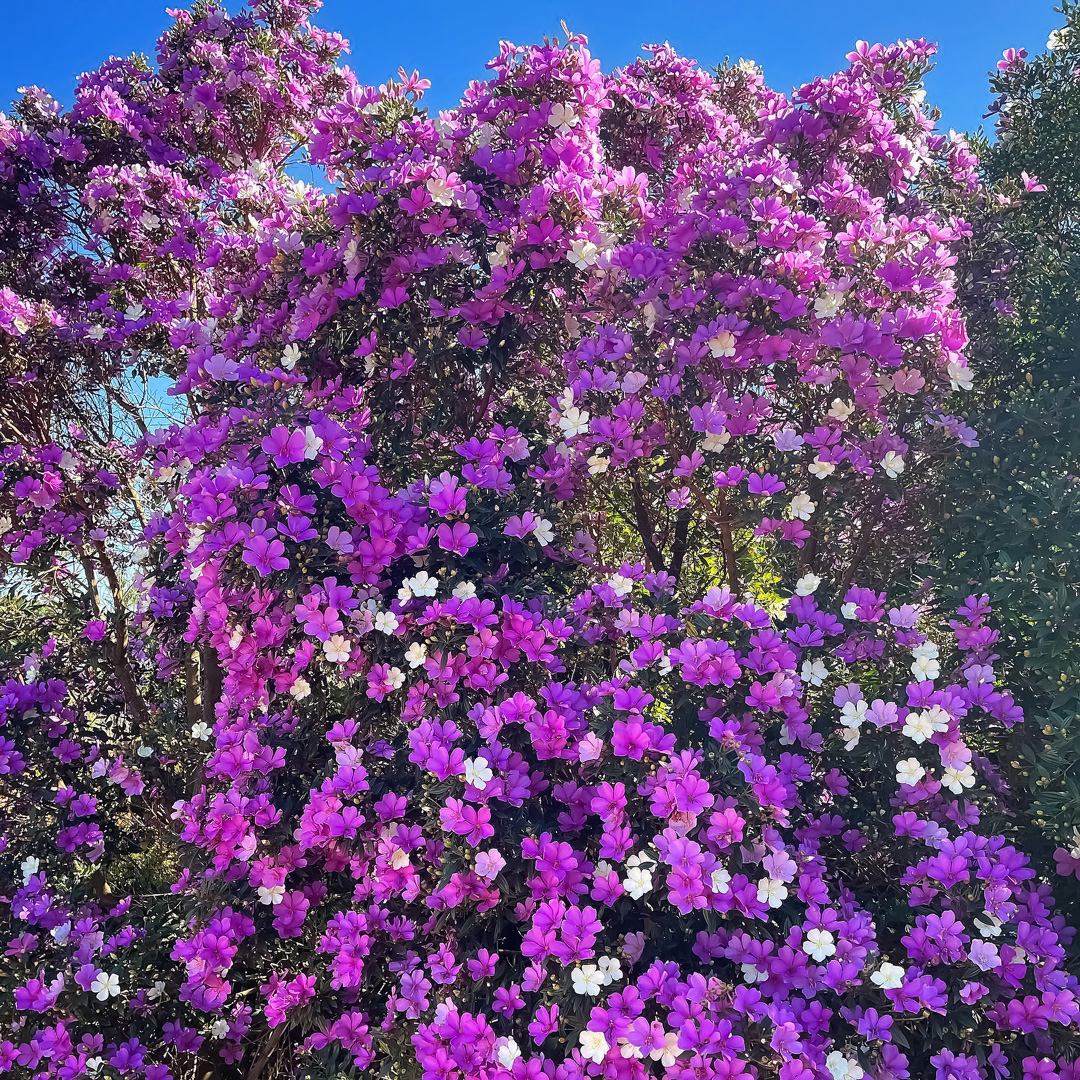
Manacá da Serra
(Pleroma mutabile)
With flowers that change color over time as they are pollinated, the Manacá da Serra is one of the symbols of the Atlantic Forest biome, often seen in mountainous areas like the Serra do Mar. In traditional medicine, it is used to treat rheumatic pain and inflammations.
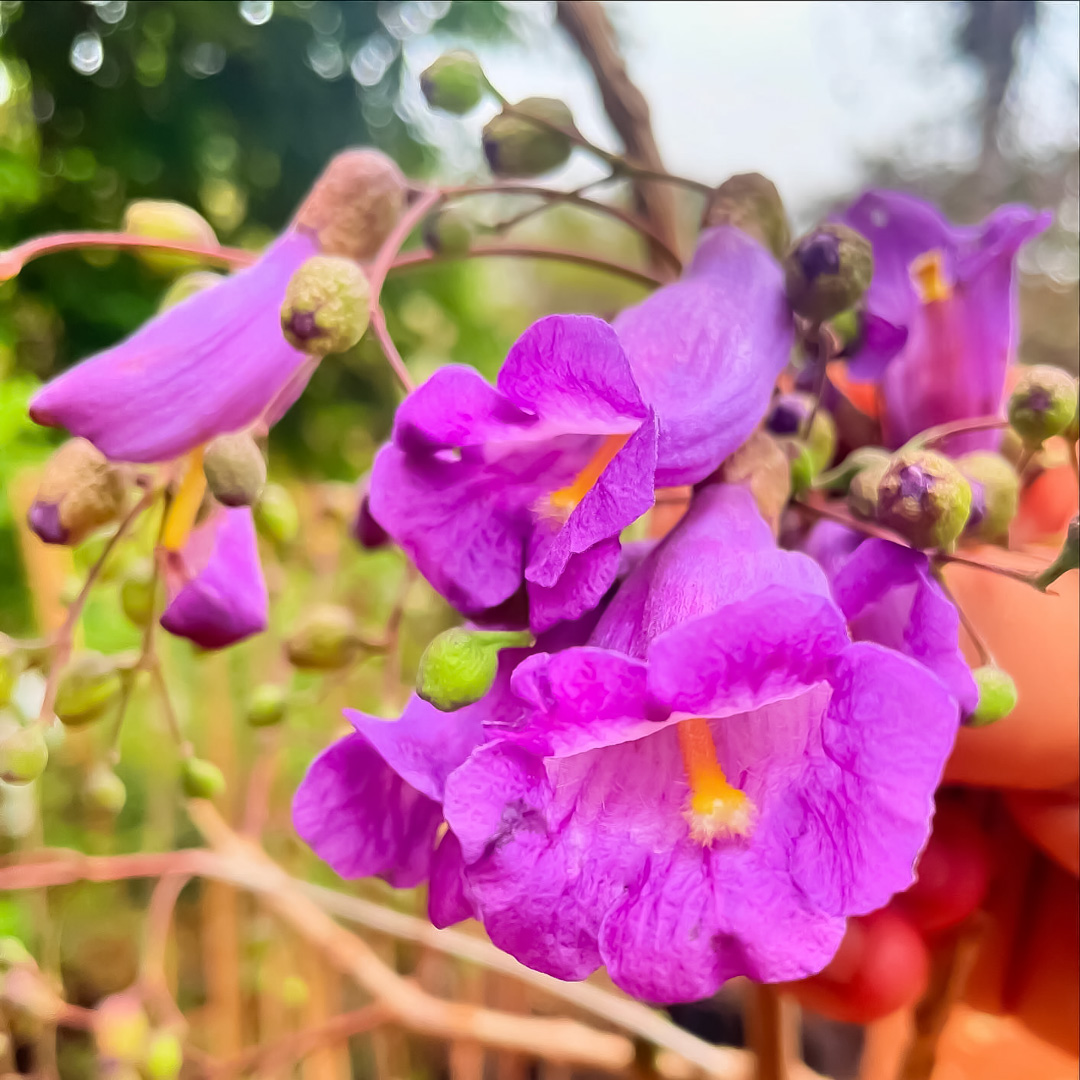
Jacarandá Carobinha
(Jacaranda micrantha Cham)
Native to Brazil, this tree blooms between spring and summer. In traditional medicine, Jacarandá is known for its anti-inflammatory and diuretic properties. The leaves and bark are used in teas to treat kidney and liver diseases.
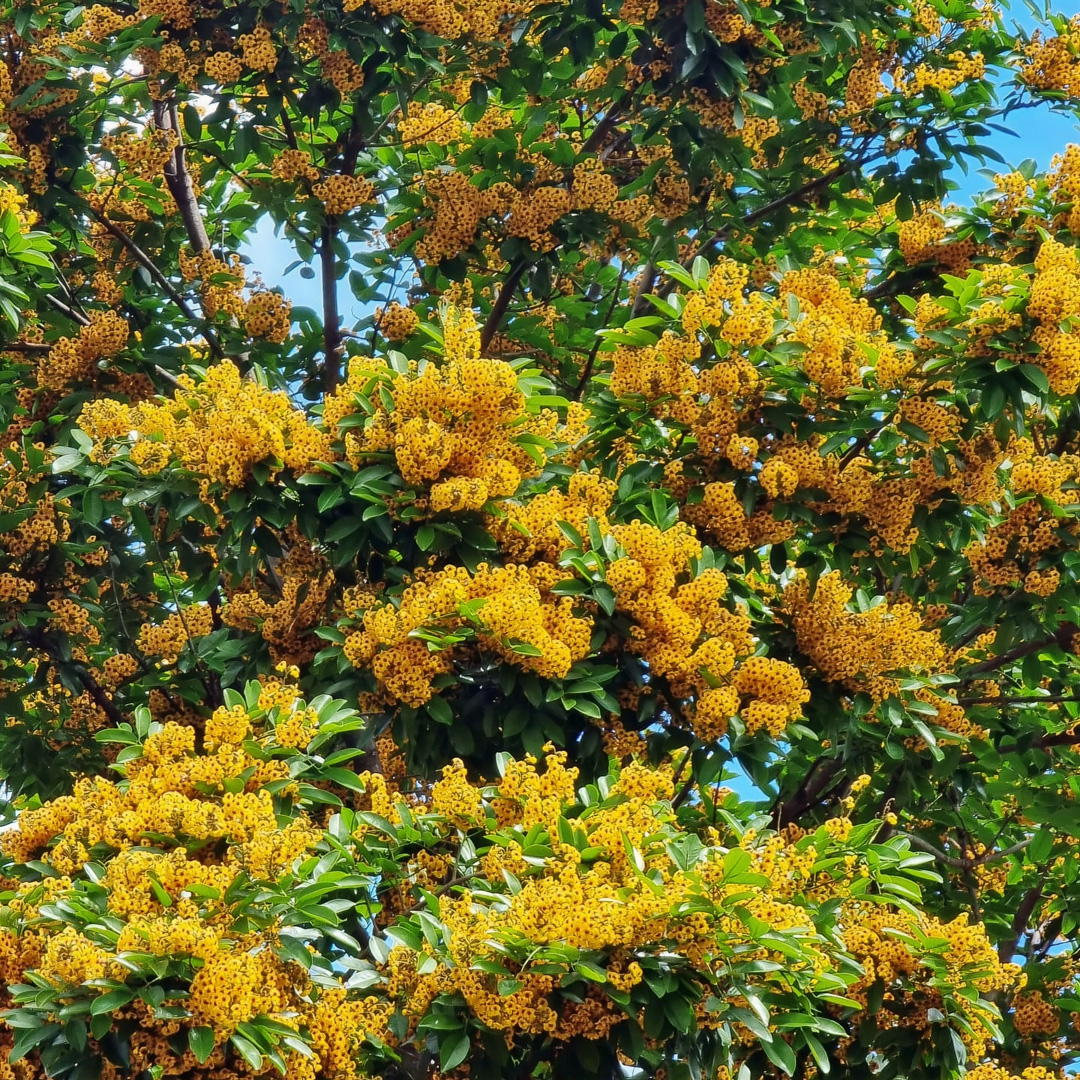
Aldagro
(Pterocarpus violaceus)
Known for its purple wood and the yellow abundant flowers, Aldagro is mainly found in Brazilian tropical forest regions. It has some of the most beautiful flowers in the Atlantic Forest, widely known for providing abundant food for bees in the spring season.
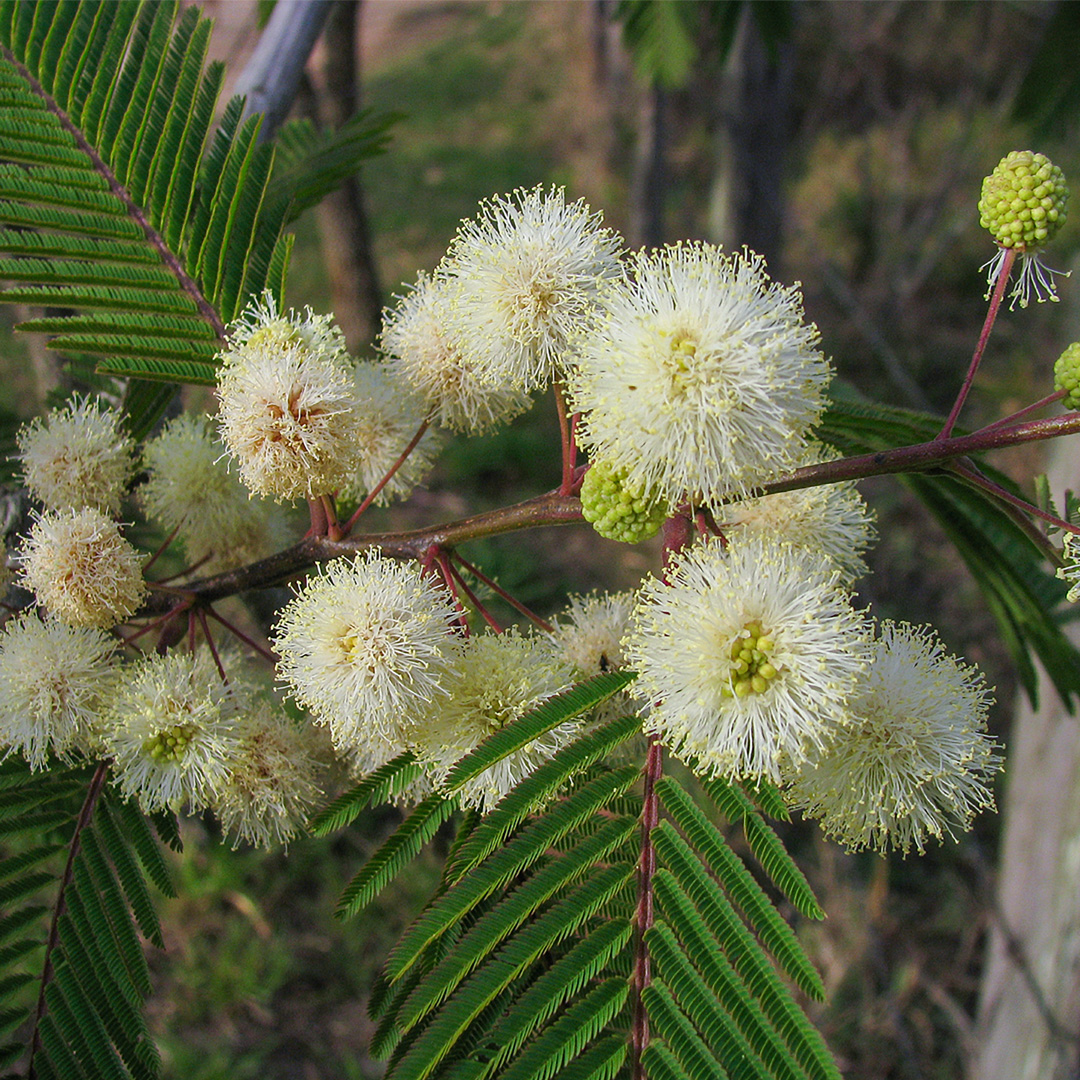
Angico Branco
(Anadenanthera colubrina)
Its bark is rich in tannins, used to treat wounds and inflammations. Additionally, it is employed in traditional medicine for respiratory and digestive issues. The resin is also used in popular treatments for the respiratory tract.
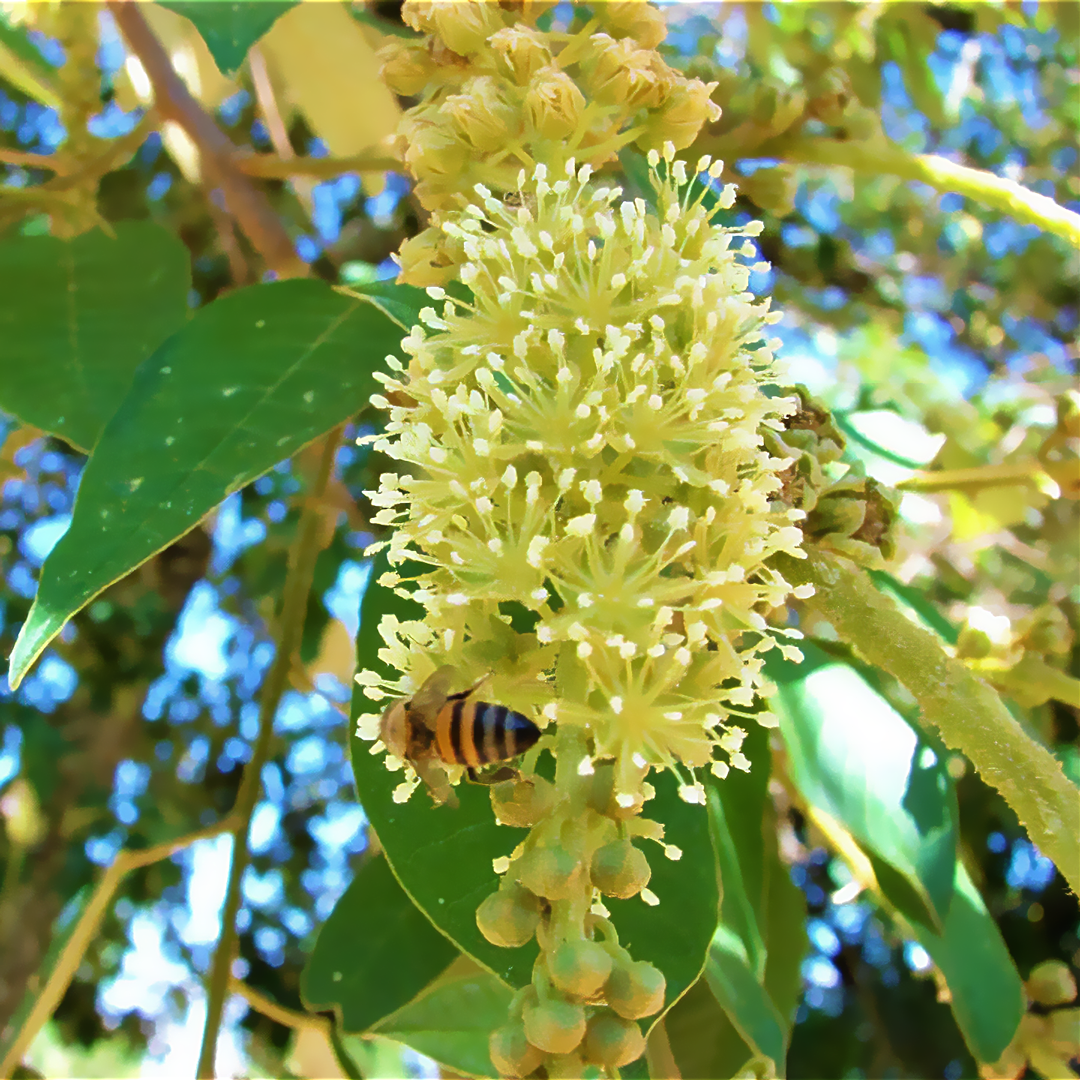
Capixingui
(Croton floribundus)
Also known as Cambará, this Brazilian native tree is found in various biomes, including the Atlantic Forest. It is well-known for attracting bees during its flowering season in spring, growing quickly and reaching up to 20 meters in height. In traditional medicine, it is used as an anti-inflammatory and analgesic.
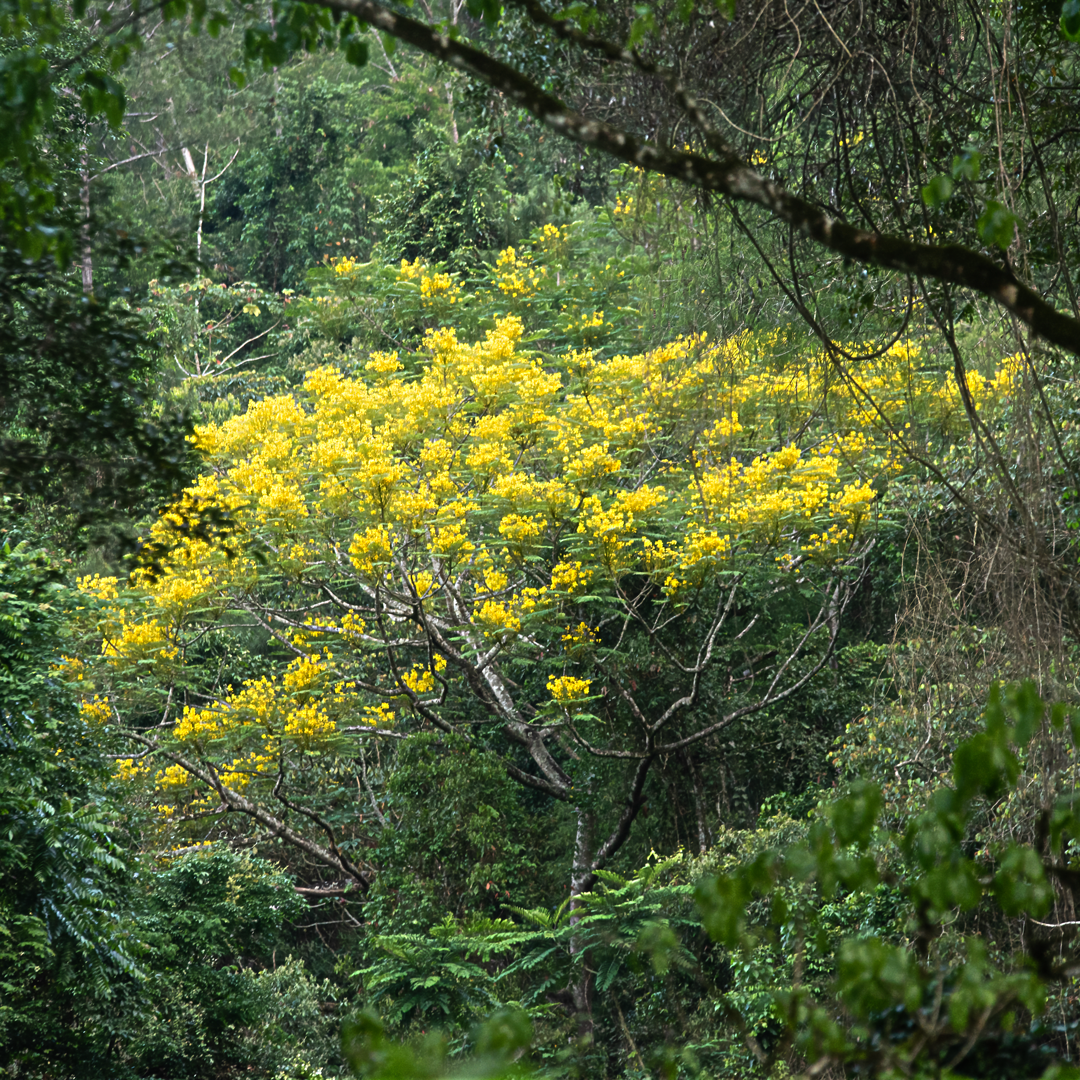
Guapuruvu
(Schizolobium parahyba)
A native Brazilian tree, is known for its strikingly tall, slender trunk and vibrant, yellow flowers that bloom in spring. Found primarily in the Atlantic Forest, it provides essential resources for pollinators. In traditional medicine, the bark is used in teas to alleviate respiratory and circulatory issues.
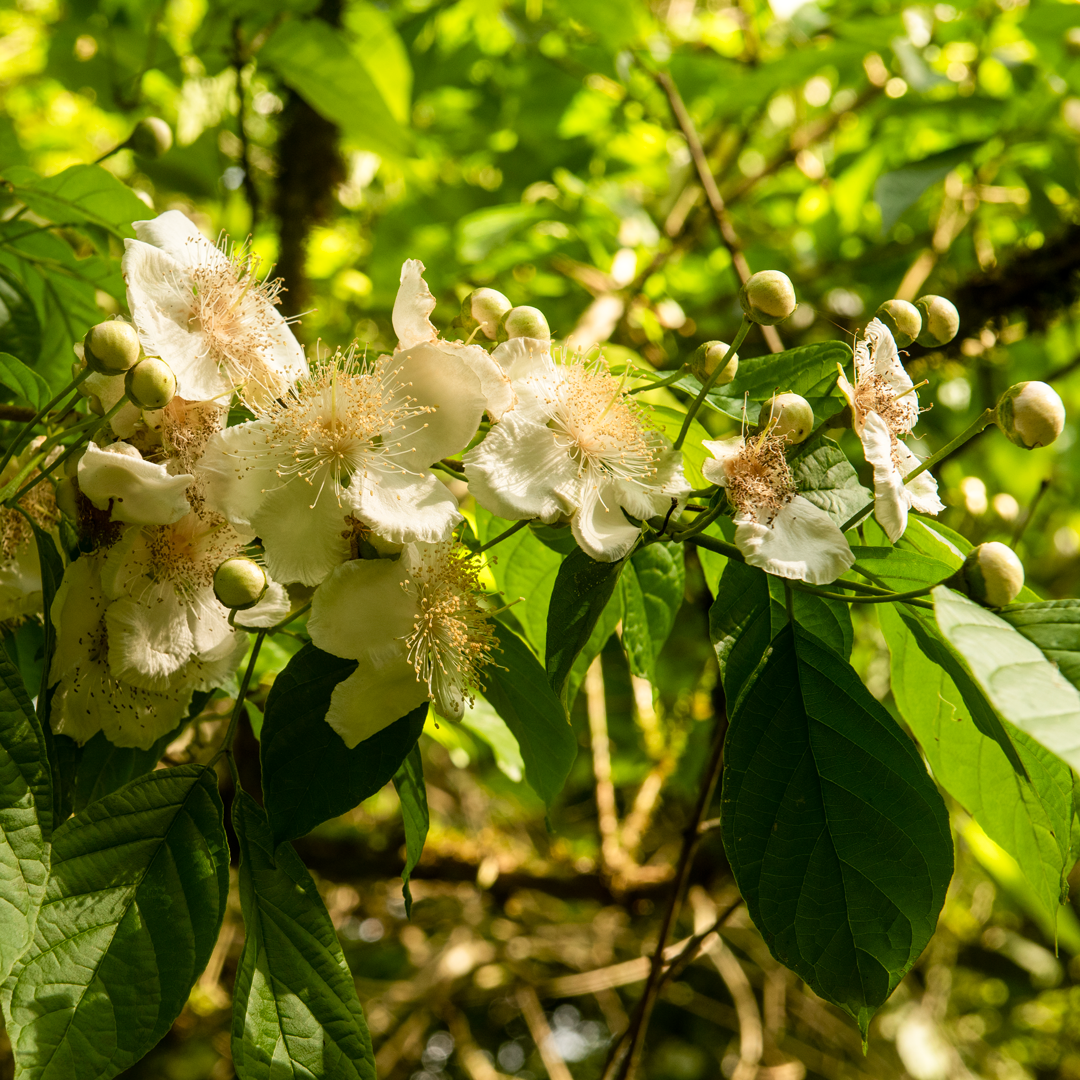
Gabiroba
(Campomanesia xanthocarpa)
This native Brazilian tree stands out for its shiny brown trunk, dense foliage, and delicate, aromatic blossoms that attract bees and other pollinators in spring. Its orange fruits are acidic yet sweet, rich in vitamin C and antioxidants, serving as an essential food source for local wildlife.
BIOPHOTOGRAPHY:
Awa Trading is a biophotography partner and the photos of the blooms above were taken by photographers: Gustavo Giacon (Ipê-amarelo, Assa pesca, Manacá da Serra, Jacarandá Carobinha and Aldagro), André Benedito (Angico Branco) and Lucas Pontes (Guapuruvu, Capixingui and Gabiroba).
